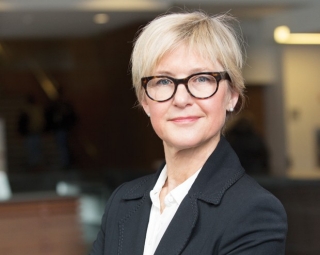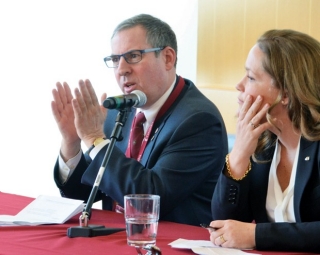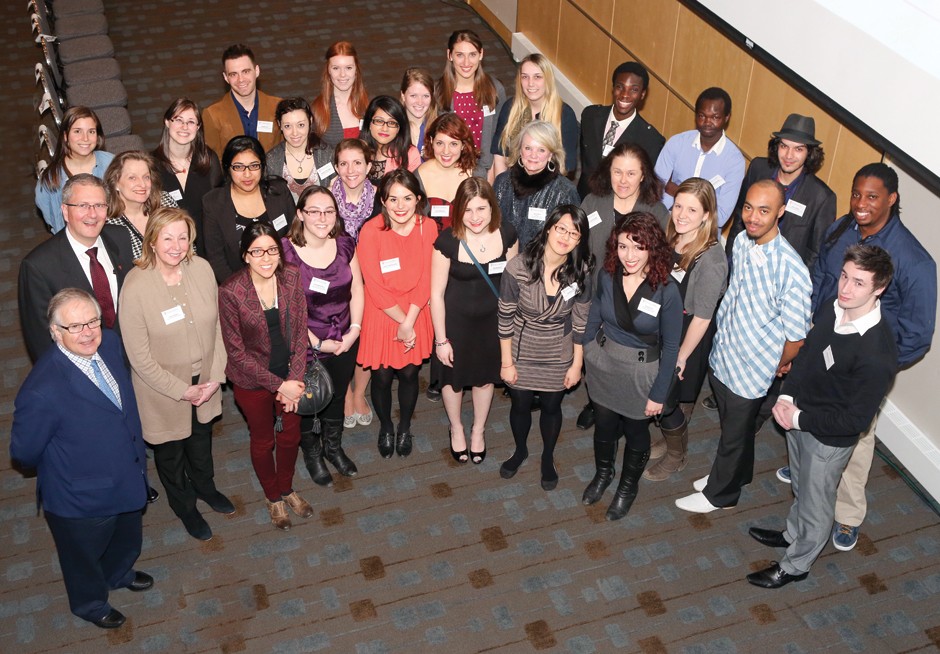Canadians are generous. Almost 90 per cent donate to charities in some way, according to the most recent National Survey on Giving, Volunteering and Participating prepared by Statistics Canada and Imagine Canada. However, less than 25 per cent take advantage of the allowable deduction when filing their tax returns. These figures also exclude the numerous times people stuff money into a jar, buy raffle tickets, make in-kind donations or volunteer time or services without asking for a receipt.
“Philanthropy is about the joy of giving,” Elizabeth Gomery, co-founder of Philanthropica, a charity-oriented consultancy, told colleagues at a panel discussion called “The secret of giving: Why people donate — from boomers to millennials” held by Concordia and the Council for Advancement and Support of Education. “People understand that it’s an inherently selfish act that makes us feel good because it’s one of the few ways that we, as individuals, can actually make a positive difference in the world.”
Gomery also noted that individuals who regularly donate money and/or give of their time enjoy longer and healthier lives for the most part. They generally are grateful to be able to help others.
Parental footsteps
Some follow the example set by their parents or other relatives. Reginald Howard Webster saw his father, Senator Lorne Webster, donate money to keep the YMCA in Quebec City open during the Great Depression so that hot soup could be handed out daily to people in need of a meal. Highly successful at various enterprises in his own life years later, R. Howard Webster gained tremendous satisfaction by assisting worthy causes, often doing so anonymously.
The R. Howard Webster Foundation is one of Canada’s leading private grants organizations that have been pivotal in helping Concordia and other institutions and organizations realize their goals. For instance, the foundation supported Concordia’s R. Howard Webster Library, which opened in 1992 and is named after its benefactor.
“We carefully research how we can strategically donate money to achieve something that government isn’t doing so that all Canadians benefit,” Howard Davidson, BComm 80, said at “The secret of giving.” Davidson is the Webster Foundation’s president and trustee, as well as chair of the Concordia University Foundation and its investment committee. “We always want to make the greatest possible impact with our grants,” he added. “So we particularly like initiatives that involve funding that will be matched by the requesting organization and the government to achieve a significant undertaking.”
Major donors
 Michèle Paulin, a professor in the Department of Marketing at Concordia’s John Molson School of Business, was one of the panellists at “The Secret of Giving: Why people donate — from boomers to millennials,” a panel discussion hosted by Concordia and the Council for Advancement and Support of Education in 2015.
Michèle Paulin, a professor in the Department of Marketing at Concordia’s John Molson School of Business, was one of the panellists at “The Secret of Giving: Why people donate — from boomers to millennials,” a panel discussion hosted by Concordia and the Council for Advancement and Support of Education in 2015.
 Howard Davidson, president and trustee of the r. Howard Webster foundation, and Elizabeth Gomery, co-founder of Philanthropica, spoke at “The secret of giving” panel discussion at Concordia.
Howard Davidson, president and trustee of the r. Howard Webster foundation, and Elizabeth Gomery, co-founder of Philanthropica, spoke at “The secret of giving” panel discussion at Concordia.
 Richard J. Renaud (bottom left) is pictured in 2013 with some of the many students who have benefited from his generosity. Renaud says his first gift to the university was a Christmas basket that he and his wife Carolyn (to his right) donated to a Loyola chapel drive soon after their marriage.
Richard J. Renaud (bottom left) is pictured in 2013 with some of the many students who have benefited from his generosity. Renaud says his first gift to the university was a Christmas basket that he and his wife Carolyn (to his right) donated to a Loyola chapel drive soon after their marriage.